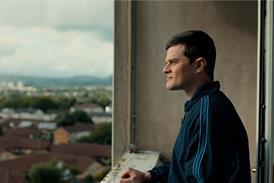There are essentially two reasons to embrace any fundamental business change: because you want to or because you have to. Given the uncertainties outlined in this report - and the necessity to pay the bills - it is hardly surprising that enthusiasm for any kind of digital revolution is limited.
Having no choice is likely to remain the more powerful stimulant for action. In any period of profound technology change, the old means of doing business are always undermined more quickly than new ones are able to establish themselves.
Some of these negative stimuli are driven by technologies themselves; some by consumer attitudes; and others still are external influences that are coincidental to the core changes.
Right now all are contributing to a general climate of instability which, for better or worse, will drive change.
Perhaps the two biggest negative influences for Europe have already been discussed in piracy and over-production.
There are however other factors that need to be considered.
DVD SLOWDOWN
DVD has been the cash cow of the film business. In revenue terms, the DVD provides most profit for most films. But over the last few years, the rate of growth has declined and in some territories sales is actually falling.
The immediate hope for a replacement for declining DVD growth was an
upgrade to high-definition DVD discs, capable of storing far greater amounts of content at a quality to match new HD-enabled television.
But those plans have been mired in a damaging format war, which split the studios and left the public confused and reluctant to upgrade.
A clear winner only emerged in early 2008, when the Sony-backed Blu-Ray format saw of its HD rival.
But while the physical formats have been scrapping to lead the high-definition market, the potential for downloading has been gathering pace.
DVD is likely to remain a key distribution platform but video-on-demand and other forms of digital distribution look ready to share a piece of the action.
It's a simple piece of economics: the studios were reluctant to invest in any technology alternative to DVD while it was making so much money.
Now that disincentive has been considerably weakened and investment in and support for online alternatives are gathering pace which the rest of the market will need to keep up with.
STUDIO PROFITS
If the Hollywood studios decide it is time to make the leap into digital change the economies of scale will drag everyone else along in their wake.
And there are reasons to believe they are already making decisive moves in that direction with a series of video-on-demand deals.
As ever with Hollywood, the best way to understand the studios' current
thinking is to follow the money. One of the most-quoted reports of 2007 suggested that studio blockbusters were simply not making the money they used to - the cost of talent was soaring while the revenues from DVD were falling.
The study from Global Media Intelligence - an analyst recently bought by
UK-based Screen Digest - suggested that collectively the studios (plus Dreamworks) had lost $1.9bn from 132 films. Click here for more.
Significantly the report was aimed at institutional investors which, in recent years, have bankrolled studio films with billions of dollars in slate financing deals.
Studios need to keep the investors interested and if the current way of working isn't achieving that goal then change is inevitable.
It's no coincidence that the studios have signed so many VOD and download-to-own deals in the last two years, having been previously slow starters.
TELEVISION
Television sales for filmhave been losing their value considerably in recent years.
Television has change in a number of distinct ways to the disadvantage of film sales:
» A shift away from film to reality television, cooking programmes etc. That change was inevitable given the easy access to films through DVD, cable and satellite.
»A move away from often state-run network television to scattered satellite and cable services
» Competition from new media platforms will only accelerate tectonic shifts in television that have been clear for some time.
Nonetheless, it means more headaches for independent film-making in its current incarnation. Pre-sales, so essential to indies, have been falling and it is difficult to see a reason for optimism about those revenues returning.
Indeed television is itself looking to digital platforms as a means of increasing revenue streams - and that may further undermine the status quo.
RECESSION
The possibility of an economic downturn could have an important impact.
There is a piece of popular mythology that sees cinema-going as recession proof. That idea dates back to the early eighties but price rises and the shift to out-of-town multiplexes may mean a reassessment is necessary.
A trip to the cinema is not the cheap option it once was. What's more the studios are now owned by major conglomerates with interests that look more vulnerable (such as theme parks).
Certainly, expenditure on cinema-going is not tied to a country's gross domestic product. In Europe in 2002 and 2003, the market for filmed entertainment (comprising box office revenue plus video/ DVD purchases and rental) rose by 13.6% and 9.8% respectively, while GDP grew by 1% and 0.9%.
But those were relatively healthy periods of consumer spending. In more troubled times, it is less clear how consumers might behave.
Recession may offer to incentives to digital change. Firstly, D-cinema can enhance the offering of cinemas, adding to value for money against competing entertainment activity.
Secondly, product distributed online may more effectively reach customers at home at a time when staying is likely to grow fast.
THE POSITIVE DRIVERS
Concentrating on the negatives in the current climate is understandable: the idea that there is no going back is probably a greater influence at the current stage of digital progress than any enthusiasm for the future.
It's important to have a sense of realism about the nature of change.
The argument that early adoption of technologies carries big risks is of course true. All major business changes go through the same cycle.
Business analyst, Gartner, characterises the process as follows:
»Peak of Inflated Expectations
»Trough of Disillusionment
» Slope of Enlightnement
» Plateau of Productivity
The technology triggers fired some years ago and we are largely over the peak. It's fair to say that in most of the world the trough is a fair assessment of where the industry sits.
There's a difference, however, in not being carried away by the new and failing to engage.
Risk aversion is an understandable, and often sound, policy where there is much to protect. Certainly the studios have been reluctant to leap into change that might damage its core businesses, particularly DVD. But most studios, aswe shall see, have been active in preparing the ground for change.
It is less easy to see what European companies have to protect. If the excited talk about ending the dominance of Hollywood was not empty rhetoric, taking risks must be a given.
NEW GADGETS
First among those reasons is the development of new consumer gadgets. The technology should not be over-emphasised - the bits and bytes themselves are not as important as what they can deliver, although arguably Apple's iPod showed it is possible for a piece of user-friendly technology to turn an industry inside out.
The killer gadget has not yet arrived on the scene for film - if indeed it ever will - but one piece of kit is exerting influence and that is the broadband router.
Broadband access is a necessity if digital distribution is to become a reality. But the rollout of high-speed internet services is fragmented actoss the continent.
WORD OF MOUTH
The range of influencers for our film choices has changed over recent years. We are certainly at the end of the era of the make-or-break critic, particularly for Hollywood films.
Indeed,the disappearance of the newspaper critic has become a major concern for the industry, particularly in the US.
Most of the power of the critic was based on the fact that every week a few films would be distributed which would film live or die by its opening weekend.
Now there is an understanding that word of mouth, either verbal or through social networking has taken on a particular importance.
Equally, marketing has already discovered the power to aggregate interest groups. That's not just an internet phenomenon, it is now an established practice for certain types of films top approach women's magazines for reviews and features. Online that aggregation takes on a new power.
EUROPEAN POLICY
European policy has not always kept pace with the changing market but the recognition of former weakness may be an important driver for progress.
A concerted effort to take a pan-European approach is clearly now in place in European Commission policy.
There are several common threads that characterise these different policy and regulatory developments, including:
» An emphasis on the need to build economies of scale and to provide certainty to markets
» The desire to provide a coherent open market for content, while protecting copyright
» The objective of contributing to the Lisbon Agenda economically through the generation of growth and jobs
» The pursuit of cultural objectives through the promotion of social inclusion and cultural diversity.
However, there is also the slightly schizophrenic combination of the promise of a light regulatory touch to allow markets the fl exibility to develop, and the veiled threat of regulatory intervention should industry not be acting fast enough to exploit market potential.
In fact, it is perhaps this last trend which best characterises the current battle of wills between a Commission pushing an ambitious, pan-European vision that will allow the region to catch up, and industry that claims to want the prize, but seems reluctant to enter the race.
POSITIVE POTENTIAL
Right now the negative motivation may be obvious to the industry but one could say the same about the initial reaction to most innovation.
Attitudes to digital cinema, for example, have shifted from suspicion and some hostility to a consensus that it has the potential to be very positive for the whole industry.
The fears are not irrational - it is still far from clear how smaller arthouse cinemas can afford the change to D-cinema.
But there is a powerful logic to D-cinema change which are increasingly difficult to ignore.
The essential elements of digital transformation are customer engagement and freedom from the restrictions of an industry obsessed by the opening weekend.
At heart, these are exciting changes that make cultural diversity an achievable aspiration.
That doesn't help the balance sheet in the short term but it is important not to lose sight of long-term potential.















![[Clockwise from top left]: Paul Thomas Anderson, Chloe Zhao, Ryan Coogler, Park Chan-wook](https://d1nslcd7m2225b.cloudfront.net/Pictures/274x183/9/0/0/1467900_writerdirectors_192733.jpg)


No comments yet